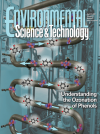Deciphering the Combined Effects of Environmental Stressors on Gene Transcription: a Conceptual Approach

Scientific abstract
Use of classical mixture toxicity models to predict the combined effects of environmental stressors based on toxicogenomics (OMICS) data is still in its infancy. Although several studies have made attempts to implement mixture modeling in OMICS analysis to understand the low-dose interactions of stressors, it is not clear how interactions occur at the molecular level and how results generated from such approaches can be better used to inform future studies and cumulative hazard assessment of multiple stressors. The present work was therefore conducted to propose a conceptual approach for combined effect assessment using global gene expression data, as illustrated by a case study on assessment of combined effects of gamma radiation and depleted uranium (DU) on Atlantic salmon (Salmo salar). Implementation of the independent action (IA) model in re-analysis of a previously published microarray gene expression data was performed to describe gene expression patterns of combined effects and identify key gene sets and pathways that were relevant for understanding the interactive effects of these stressors. By using this approach, 3120 differentially expressed genes (DEGs) were caused by additive effects, whereas 279 (273 synergistic, 6 antagonistic) were found to deviate from additivity. Functional analysis further revealed that multiple toxicity pathways, such as oxidative stress responses, cell cycle regulation, lipid metabolism and immune responses were enriched by DEGs showing synergistic gene expression. A key toxicity pathway of excessive reactive oxygen species (ROS) formation leading to enhanced tumorigenesis signaling is highlighted and discussed in detail as an example of how to take advance of the approach. Furthermore, a conceptual workflow describing the integration of combined effect modeling, OMICS analysis and bioinformatics is proposed. The present study presents a conceptual framework for utilizing OMICS data in combined effect assessment and may provide novel strategies for dealing with data analysis and interpretation of molecular responses of multiple stressors.
Full reference (link):
Song, You, Asselman, J., De Schamphelaere, K., Salbu, B., & Tollefsen, K. E. (2018). Deciphering the Combined Effects of Environmental Stressors on Gene Transcription: a Conceptual Approach. Environmental Science & Technology.52 (9), pp 5479–5489.
